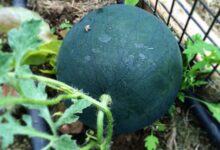Story of Day :
If you have been caring for your plants and they are still dying, it can be a frustrating experience. Fortunately, there are some steps you can take to help revive your plants and keep them healthy.
In this article, we will discuss what to do if your plants are dying, including identifying the cause of the problem, providing proper care, and troubleshooting common issues. With the right knowledge and care, you can save your plants and keep them thriving.
Contents
5 Reasons Why Your Plants May Be Dying and How to Fix Them

Not Enough Water
Water is essential for the survival and growth of plants. It is the main component of their cells and helps transport nutrients throughout their system. When plants do not receive enough water, they begin to experience a range of symptoms that indicate their distress.
One of the most common signs that a plant is not receiving enough water is wilting. This occurs when the plant’s leaves and stems lose their turgor pressure, causing them to droop and appear limp. In severe cases, the leaves may become crispy and brown, indicating that they are dying.
Another symptom of water deficiency is yellowing of the leaves. This occurs when the plant is unable to absorb enough water to carry out photosynthesis, causing the chlorophyll in the leaves to break down. As a result, the leaves may turn yellow or even brown and fall off.
To remedy this issue, it is important to water your plants regularly and deeply. This means providing enough water to penetrate the soil and reach the roots of the plant. To determine if your plant needs watering, check the soil moisture level by sticking your finger into the soil. If the top inch of soil feels dry, then it is time to water.
When watering your plants, make sure to use a watering can or hose with a gentle spray nozzle. Avoid overwatering your plants, as this can lead to root rot and other issues. Instead, water deeply and allow the soil to dry out slightly before watering again.

Too Much Water
Overwatering is a common mistake that many new gardeners make. While it’s important to keep your plants hydrated, too much water can lead to a host of problems. When the soil is constantly wet, the roots of the plant can become waterlogged and begin to rot. This can cause the leaves to turn yellow or brown and eventually fall off.
In addition to root rot, overwatering can also lead to the growth of mold and fungus, which can damage the plant’s health. If you notice a musty smell or see white, fuzzy growth on the soil or leaves, it’s likely that your plant is suffering from too much water.
To fix the problem, start by reducing the amount of water you’re giving your plants. Check the soil regularly, and only water when the top inch or so feels dry to the touch. You can also improve drainage by adding perlite or sand to the soil mix or repotting your plant in a container with drainage holes.
It’s important to remember that different plants have different water requirements, so it’s essential to do your research and make sure you’re giving your plants the right amount of water. By finding the right balance, you can help your plants thrive and avoid the problems that come with overwatering.

Not Enough Sunlight
There are several reasons why your plants may not be getting enough sunlight. One of the most common is that they are placed in a location that does not receive enough natural light. This could be because they are positioned in a shaded area, or because they are indoors and not near a window that gets enough sunlight. In some cases, trees or other tall plants may be blocking the light from reaching your plants.
To address this issue, you can move your plants to a brighter location that receives more direct sunlight. If you have an outdoor garden, you can try repositioning your plants to a sunnier spot. If your plants are indoors, you can try moving them closer to a window that gets more sunlight or investing in a grow light.
Grow lights are artificial lights that provide a spectrum of light that is similar to natural sunlight. They are often used by indoor gardeners to supplement the amount of light that their plants receive. Grow lights can be purchased in a variety of sizes and styles, depending on the type of plants you are growing and how much light they need. Some grow lights are designed to mimic the natural cycles of daylight and darkness, while others can be adjusted to provide different levels of light intensity.
In summary, if your plants are looking pale and weak, they may not be getting enough sunlight. To fix this, you can try moving them to a brighter location or investing in a grow light. With the right amount of light, your plants will be able to thrive and grow to their full potential.

Too Much Sunlight:
Plants need sunlight to grow and thrive, but too much of it can be harmful to them. When plants are exposed to excessive sunlight, their leaves may start to turn brown and wilt, indicating that they are being scorched. This can be a common problem during the summer months, when the sun is at its peak and temperatures are high.
If you notice that your plants are suffering from too much sunlight, it’s important to take action quickly to prevent further damage. One effective solution is to move the plants to a spot that receives less direct sunlight. This might mean shifting them to a shadier area of your garden or moving them indoors to a cooler, more controlled environment.
Another option is to provide some shade for your plants using a sheer curtain or shade cloth. These materials can help to filter out some of the sunlight, reducing the intensity of the rays that reach your plants. This can be particularly useful for outdoor plants that are exposed to direct sunlight for long periods of time.
When providing shade for your plants, it’s important to choose a material that allows some light to pass through. This will ensure that your plants continue to receive the sunlight they need to grow and stay healthy. Additionally, it’s important to monitor your plants closely to make sure that they are responding positively to the changes you’ve made. With a little bit of care and attention, you can help your plants thrive even in the hottest summer months.

Pests:
Pests can be a major problem for any gardener, and they can cause significant damage to your plants if left untreated. Some common pests that you may encounter include aphids, spider mites, whiteflies, and scale insects. These pests can feed on the leaves, stems, and fruits of your plants, causing them to wilt, yellow, or even die.
If you notice any signs of pests on your plants, such as tiny holes in the leaves or sticky residue on the leaves or stems, it’s important to take action right away. One of the best ways to control pests is to inspect your plants regularly, especially the undersides of leaves and near the stem, to catch any infestations early.
There are several ways to treat pests, including using insecticidal soap or neem oil. Insecticidal soap is a natural pesticide that works by suffocating the pests, while neem oil is an organic pesticide that disrupts the pest’s life cycle. Both of these treatments are safe and effective, but they may need to be applied several times to fully eradicate the infestation.
It’s also important to practice good gardening habits to prevent pest infestations from occurring in the first place. This includes keeping your plants healthy and well-watered, removing any dead or diseased plant material, and avoiding over-fertilizing, which can attract pests.
By taking proactive steps to prevent and treat pest infestations, you can keep your plants healthy and thriving all season long.
If you notice any bugs on your plants or holes in their leaves, they may have pests. To fix this, inspect your plants regularly for signs of pests and treat them with an insecticidal soap or neem oil if necessary.

How to Diagnose and Treat Common Plant Diseases That Could Be Killing Your Plants
If your plants are looking a bit worse for wear, it could be due to a plant disease. Here’s how to diagnose and treat common plant diseases that could be killing your plants.
Check for signs of disease
Look for discolored leaves, wilting, spots, or other signs of distress. If you see any of these symptoms, it’s likely that your plant is suffering from a disease.
Identify the type of disease
Different types of diseases require different treatments. Common plant diseases include fungal infections, bacterial infections, viruses, and nutrient deficiencies.
Treat the disease
Depending on the type of disease, you may need to use fungicides, antibiotics, or other treatments to get rid of the infection. If the problem is a nutrient deficiency, you can add fertilizer to the soil to help your plant get back on track.
Prevent future problems
Once you’ve treated the disease, take steps to prevent it from happening again. This may include removing infected plants from your garden and improving air circulation around your plants.
Practice good plant hygiene
Regularly clean your gardening tools to prevent the spread of disease between plants. Also, avoid overcrowding your plants, which can lead to poor air circulation and an increased risk of disease.
Choose disease-resistant plants
When selecting new plants for your garden, choose varieties that are known to be resistant to common diseases in your area.
Maintain proper watering and fertilizing
Overwatering or under-fertilizing your plants can weaken them and make them more susceptible to disease. Make sure to follow proper watering and fertilizing guidelines for each type of plant in your garden.
Monitor your plants regularly
Keep an eye on your plants for any signs of disease, even after you’ve treated them. Early detection and treatment can help prevent the spread of disease and save your plants.
By following these steps, you can diagnose and treat common plant diseases that could be killing your plants. With a bit of care and attention, you can keep your plants healthy and happy!
Use natural remedies
For those who prefer to use natural remedies, there are many options available. For example, neem oil can be used as a natural fungicide, while garlic and onion sprays can help to repel pests and protect against fungal infections.
Seek advice
If you’re unsure about how to treat a particular disease, or if you’re struggling to keep your plants healthy, don’t hesitate to seek advice from a gardening expert or local nursery. They can help you identify the problem and provide advice on the best course of action. With proper care and attention, you can keep your plants healthy and disease-free, and enjoy a beautiful garden all year round.
Conclusion
If your plants are dying, it is important to take the necessary steps to identify the cause and address it. This may involve examining the soil, checking for pests, and ensuring that the plant is receiving enough sunlight and water. If you are unable to identify the cause of the problem, it may be best to consult a professional or seek advice from a gardening expert. With proper care and attention, you can help your plants thrive and enjoy their beauty for years to come.



